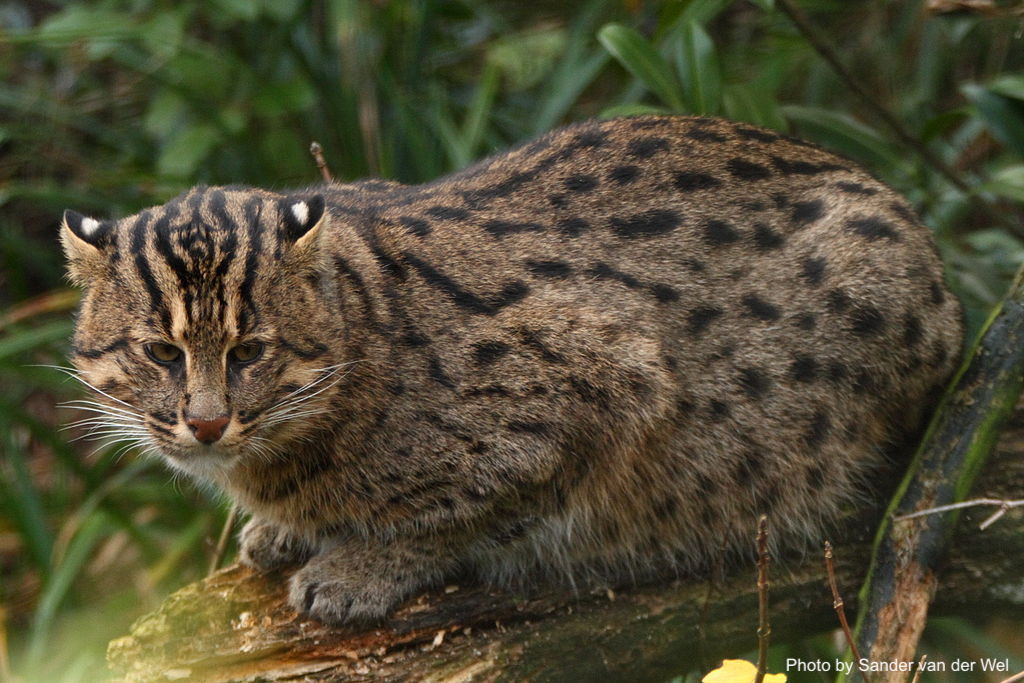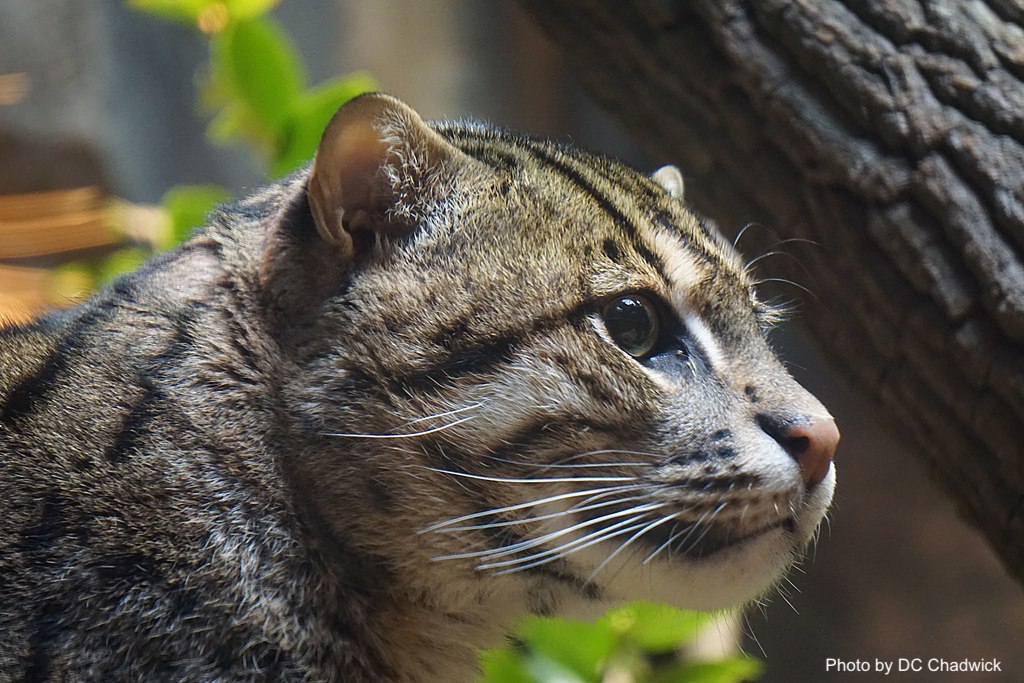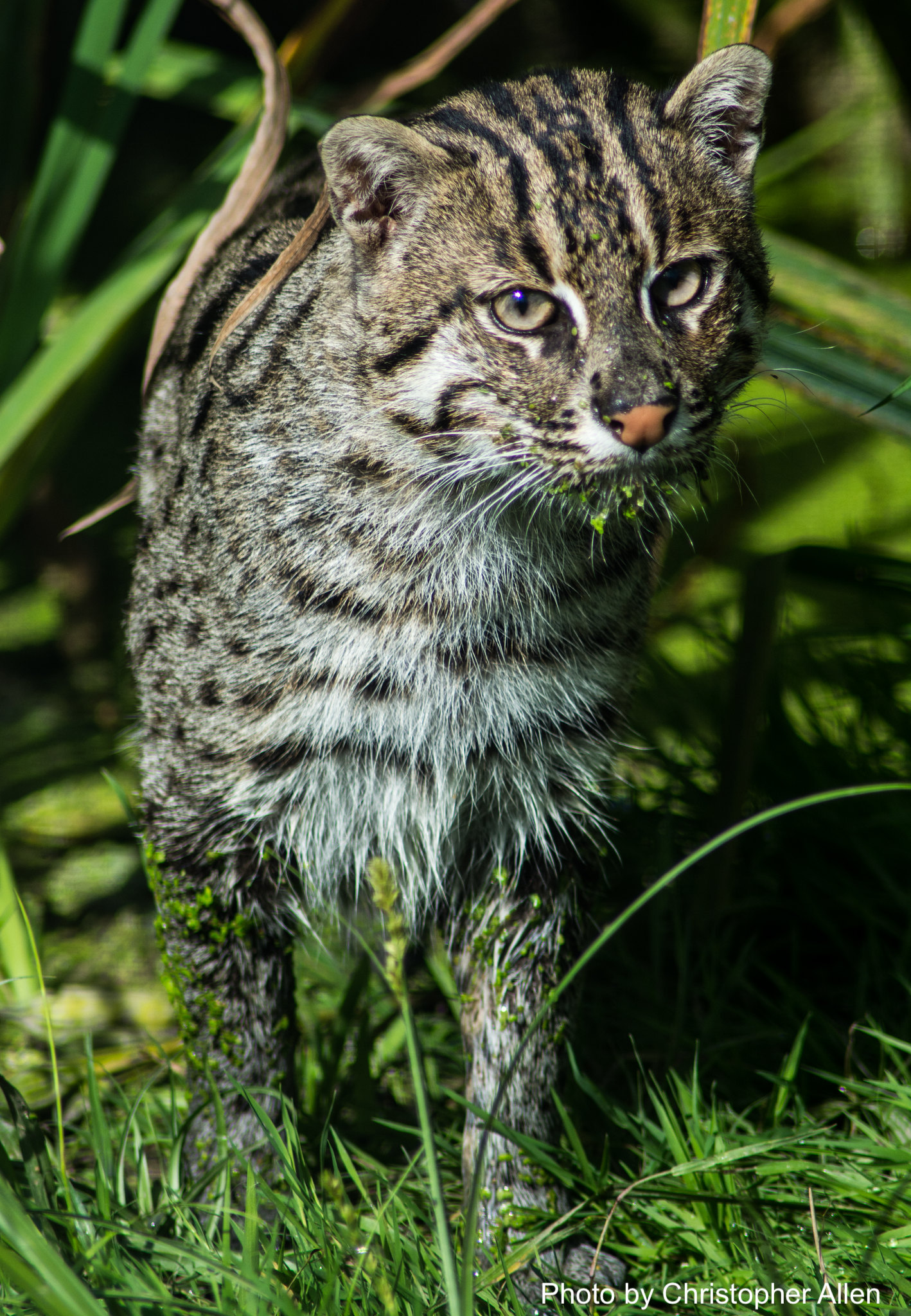 The Fishing Cat (Prionailurus viverrinu) may look a lot like the housecat we all know and love, but it possesses a surprising skill set that defies common cat stereotypes. Finally – a furry feline that isn’t afraid of the water! This resourceful cat, named after its famed ability to hunt for meals of the aquatic variety, is most active at night – feeding on small rodents, birds, and – you guessed it – freshwater fish. Fishing Cats have adapted to life in and out of the water with two-layered coats of short, dense, waterproof fur combined with long, patterned hairs that give the animal its beautiful spotted and striped appearance. They are even equipped with webbed toes and paws much larger than your average housecat, making underwater hunting a breeze. These fish-loving felines glide quickly and quietly through the shallow waters of the wetlands, brushing their long whiskers along the water surface like antennas to detect underwater movement. They carefully calculate the exact distance of their prey and dive in headfirst, striking like a snake with astonishing accuracy.
The Fishing Cat (Prionailurus viverrinu) may look a lot like the housecat we all know and love, but it possesses a surprising skill set that defies common cat stereotypes. Finally – a furry feline that isn’t afraid of the water! This resourceful cat, named after its famed ability to hunt for meals of the aquatic variety, is most active at night – feeding on small rodents, birds, and – you guessed it – freshwater fish. Fishing Cats have adapted to life in and out of the water with two-layered coats of short, dense, waterproof fur combined with long, patterned hairs that give the animal its beautiful spotted and striped appearance. They are even equipped with webbed toes and paws much larger than your average housecat, making underwater hunting a breeze. These fish-loving felines glide quickly and quietly through the shallow waters of the wetlands, brushing their long whiskers along the water surface like antennas to detect underwater movement. They carefully calculate the exact distance of their prey and dive in headfirst, striking like a snake with astonishing accuracy.

The elusive Fishing Cat occupies a wide distribution throughout South and Southeast Asia, but its exact habitat range is largely unknown due to its enigmatic nature. What we do know is that this water-loving wildcat prefers inland wetlands, mangrove forests, or any moist areas of dense vegetation, such as the marshes of the Mekong River. Unfortunately, areas such as these are disappearing due to human interest in land development– Fishing Cats are losing living space fast, as are the fish they call food. Labeled as “Vulnerable” on the IUCN Red List, this wildcat’s population size is rapidly decreasing, and moving closer to extinction in many areas of Southeast Asia. It is imperative to understand the importance of coexisting if we want to enjoy beautiful creatures like the Fishing Cat in years to come.
 This post was written by Madisyn Pyorre for an internship with FISHBIO through the UC Santa Cruz Environmental Studies Department.
This post was written by Madisyn Pyorre for an internship with FISHBIO through the UC Santa Cruz Environmental Studies Department.